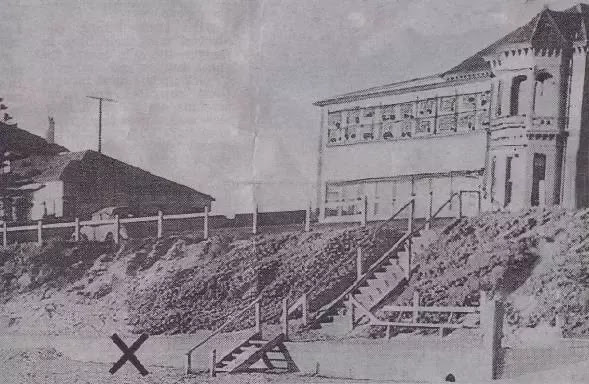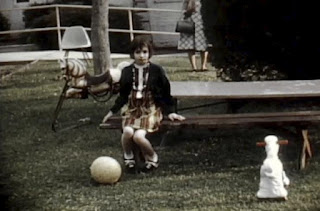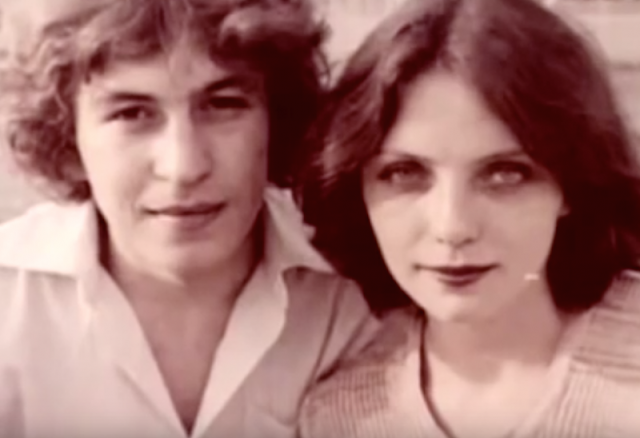The Taman Shud Case
On the evening of the 30th November 1948, various people see a man lying on a beach in Australia behaving strangely. He extends his right arm out, and then lets it drop to his side. Other witnesses say they watched him for half an hour, yet they didn't see him move. The body was discovered the next day. And here's where it gets interesting.
The location where the body was found
The man is thought to be aged between 40 and 45, and was dressed in 'quality clothing'. Despite it being a hot day, the man wore a suit, a pullover and a double-breasted coat. All labels on his clothing had been removed. Police found his arms in strange positions, with his right arm bent double. In his pockets were a used bus ticket, an unused rail ticket, an American comb, some chewing gum, a packet of cigarettes that contained a different brand sold exclusively in Britain and some matches. The bus ticket had been used at a stop around 1,100 metres north of the body's location.
The autopsy found his heart to be in normal condition, yet his pharynx was congested and his gullet was covered with 'whitening of superficial layers'. There was blood mixed with the food in his stomach. His spleen was around 3 times larger than normal. Surgeons were convinced he had not died a natural death.
The police now began to speculate as to the identity of the body, their initial theory that the man was E.C. Johnson was disproved when he presented himself to a police station. Newspapers published images of the man, and received calls regarding his identity. By February 1949 there had been eight positive identifications of the body, with each being disproven.
On the 14th January 1949, staff at Adelaide Railway Station discovered a brown suitcase that had been checked in the day the man had been seen on the beach. In the case was a dressing gown, size seven slippers, four pairs of underpants, pajamas, shaving items, light brown trousers with sand in the cuffs, an electrician's screwdriver, a table knife that had been fashioned into a shorter instrument, a pair of scissors with sharpened points, and a stenciling brush of the type used by third officers on merchant ships for stencilling cargo. Also in the case was some orange thread, of a type not available in Australia. This thread had been used to repair the trousers on the body. Again, all labels had been removed, except for the two that were impossible to remove. A tie had the name 'T. Keane', 'Keane' was on a laundry bag, and 'Kean' (No 'e') was on a singlet with dry cleaning marks. Nobody named T Keane was missing in any English-speaking country. The coat was discovered to have been made in the United States due to its unique stitching.
Detectives examining the mysterious suitcase
During the Inquest it was discovered that the man's shoes were remarkably clean and recently polished. It was at this point that police began to suspect the man had been poisoned, and that the witnesses had seen his final convulsions.
Within the dead man's trousers, a secret pocket had been made. In this was a tiny rolled up piece of paper with the words 'Taman Shud', with the paper trimmed around these words. Library officials discovered this to be an extract from a collection of poems named The Rubaiyat of Omar Khayyam meaning 'ended' or 'finished'. A photograph of the scrap was released to the public, and a man discovered a rare first edition of the book had been placed in the back seat of his car. The book was missing the words 'Taman Shud' on the last page. In the back was the following writing:
The markings in the back of the book
Also found in the back of the book was an unlisted telephone number belonging to a lady named Teresa Powell. She said that she used to own a copy, but had given it away to an army lieutenant named Alfred Boxall. After the war she had moved away from the area where she had met the man and gotten married. She later received a letter from him, and in 1948 a mystery man had asked her neighbor about her. However, Alfred Boxall was later found alive, and with his copy of the book. The woman's real name was never confirmed as she died in 2007, and police believe this may have been the clue to deciphering the code.
Years after the burial, the case was still active. A receptionist from the hotel opposite Adelaide Railway Station claimed she saw a similar man occupy one of the rooms, and that cleaners had a found a black medical bag and hypodermic syringe in the room.
In March 2008 a team from the University of Adelaide investigated the case. They found the letters of the code in the back of the book followed the quatrain format of the text itself, and suggested it may have been a one time pad. Researchers have been looking for a similar edition of the book ever since, with no success. A professor of anatomy examined the photographs of the man's ears, showing that the upper ear hollow was larger than the lower, a feature possessed by only 1-2% of the caucasian population. In addition to this, dentists discovered the man had a rare condition named hypodontia, present in only 2% of the population. In June 2010 police obtained an image of the son of 'Teresa Powell', showing the son also possessed both of these features. The chance that this is a coincidence is between 1 in 10,000,000 and 1 in 20,000,000.
And that's where I'll leave my retelling of the story, derived from the excellent Wikipedia article. It's well worth a read, although it's NSFW due to the image of the body right at the top of the article. The page also includes theories that I have declined to post here, along with further images.
http://en.wikipedia.org/wiki/Tam...





Comments
Post a Comment